Songs of Silence combines The Banner Saga vibes with turn-based strategy and auto-battles

Beautifully drawn art and a fantastical tale of doom, demise, and hope open up Songs of Silence. It’s a familiar picture: Forces as monstrous as they are enigmatic are overrunning the kingdoms of humankind despite fierce and courageous resistance. With her parents slain in a desperate last stand to save their realm, Lorelai loses her family and inherits a broken people on the same day. Still, there is hope: A mythical creature that once guided her mother appears, leading Lorelai and the remnants of her people towards a new home.
In terms of art and atmosphere, Songs of Silence reminded me of The Banner Saga quite a lot at the beginning of the demo, and being able to earnestly make that comparison is already a strong point in the Chimera Entertainment title’s favor.
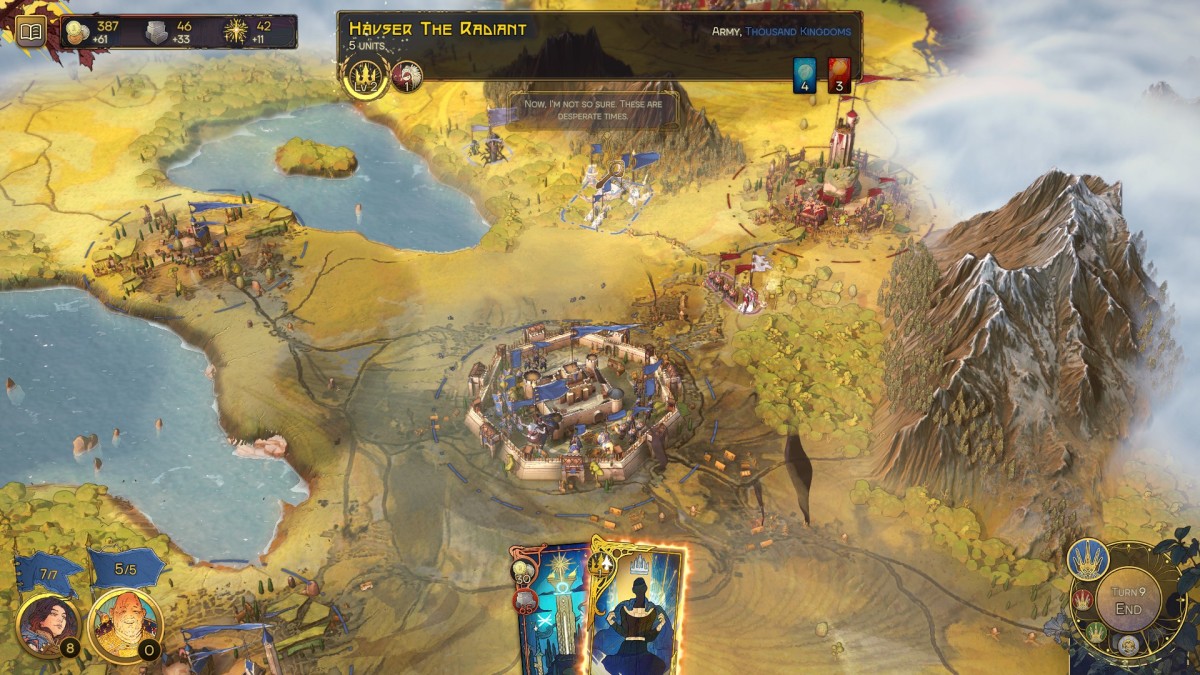
In the game’s turn-based part, you lead Lorelai’s forces over an incredibly pretty campaign map, where different kinds of settlements, roaming monsters, enemy patrols, and other locations can be found. Lorelai meets with the neighboring king’s chief advisor, who was a friend of her father and enlists her help in rescuing his own monarch from a siege by enemy forces. This gives me a second army to control on the map and I also get control over the kingdom’s capital, providing me with income for stone, gold, and faith.
Characters like Lorelai and Hauser, the advisor, lead armies into combat as heroes. Like in your typical Age of Wonders or Heroes of Might and Magic game, these forces are relatively small at the start, but become larger as the characters gain levels. These leaders can upgrade locations on the map as well, constructing buildings and fortifications that provide various bonuses such as more income, recruitment of additional units, and garrison forces for defense.
You can manually move units from active service into an army’s reserve or a location’s garrison. The first order of business for Lorelai and Hauser is to retake the defended river crossing, which initiates a battle.
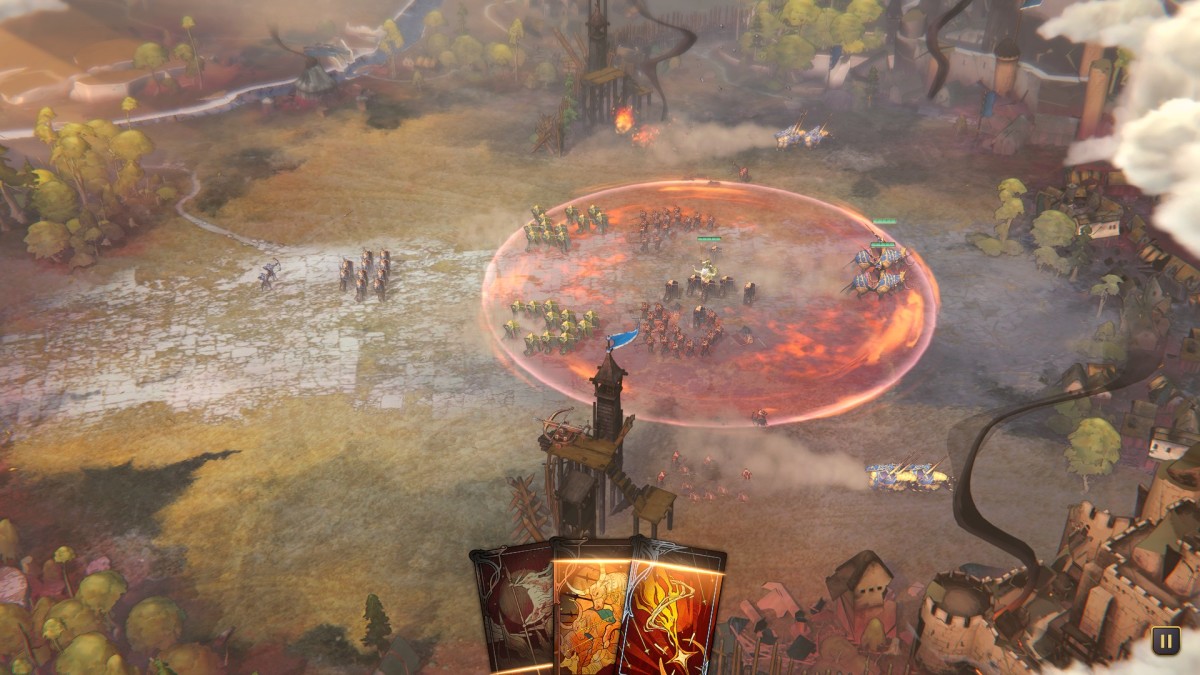
Unlike encounters in the games mentioned above, engagements in Songs of Silence run their course automatically. Both armies start in predetermined formations (you can customize that easily on the campaign map by rearranging your troops) and charge at each other. You don’t control events on the battlefield manually. However, your leader and certain units will provide cards you can play out – cooldown-based abilities you can use to influence the outcome. Lorelai starts with a card that causes a meteor to land on the battlefield, dealing damage and stunning enemies in an area. Her cavalry units can also be made to charge at a specific location, damaging enemies in their way. Hauser has a card allowing him to summon radiant beings of light to attack his enemies, which is fantastic for disrupting ranged units.
This system makes for an engaging experience that’s also quite relaxed – and it’s very tactical, emphasizing decision-making over speed. It can get quite intense, in a way, as you have to sit there and root for your units to win without being able to do much more to help.
After taking the river crossing, Lorelai and Hauser get near the besieged town with the king, their army reserves now sporting wagons with loot from their defeated enemies. These wagons need to be brought to a settlement that can convert the material into resources. Until then, they need to be protected. This is a really cool aspect that emphasizes logistics.
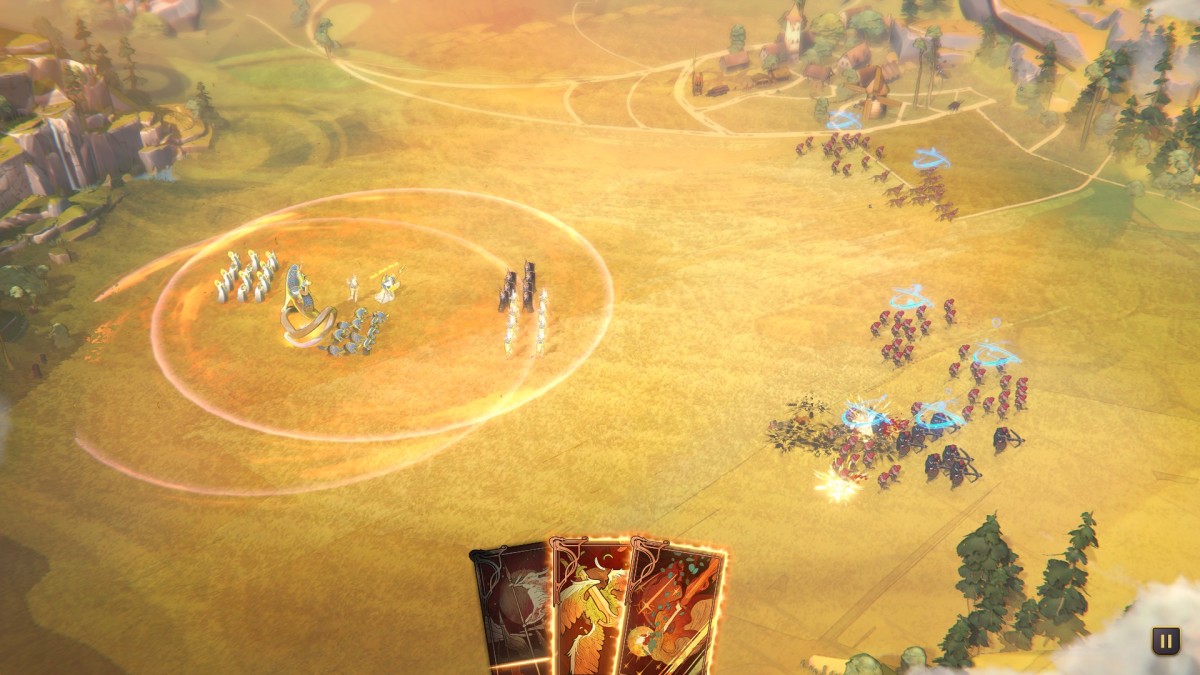
Another feature showing this game’s attention to detail is that armies will form up in a marching column to move over any large distance. When attacked in this formation, it’ll count as an ambush and the affected units will react slowly to the new situation. When an army stays in position for a turn, it’ll form up in its battle formation, ready for anything. This makes carefully planned movements very important – you don’t want to go too far and be caught off-guard. Terrain is a factor as well with forests being able to hide armies.
After lifting the siege around the king, Lorelai is told that her people can settle in this realm if she helps bring about the end of the current war. Dialog plays out on the campaign map and events encountered on the map are voiced as well in addition to textboxes.
Songs of Silence is story-driven and there are objectives that can be time-sensitive, but there seems to be a good deal of exploration as well. In the demo, there is a whole side area with its own quest that eventually leads you to controlling a magical forest and being able to recruit monster units from there. Pretty cool.
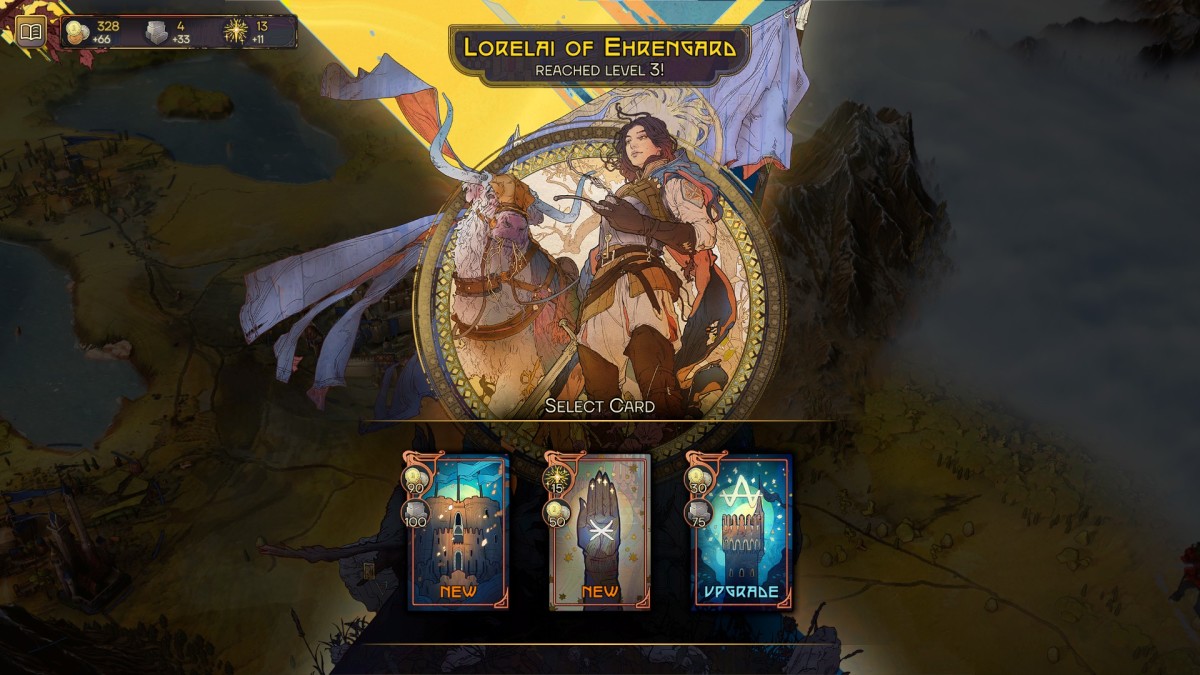
Leveling up your leaders through battles unlocks additional cards for their decks. These can be related to the campaign map, such as the ability to fortify villages or directly summon units into your army, or focused on battle, granting you new ability cards such as a protection spell that rallies retreating troops and prevents them from taking damage for a while.
All of these elements feel really good together and already make for a captivating experience in combination with the mesmerizing artstyle and the excellent soundtrack by Hitoshi Sakimoto of Final Fantasy fame.
I also want to find out more about the world and where the story is going. The demo ends with Lorelai doing the king’s bidding, only to be betrayed by him and having to flee into the Silence with her people. A classic cliffhanger. Works on me, though.
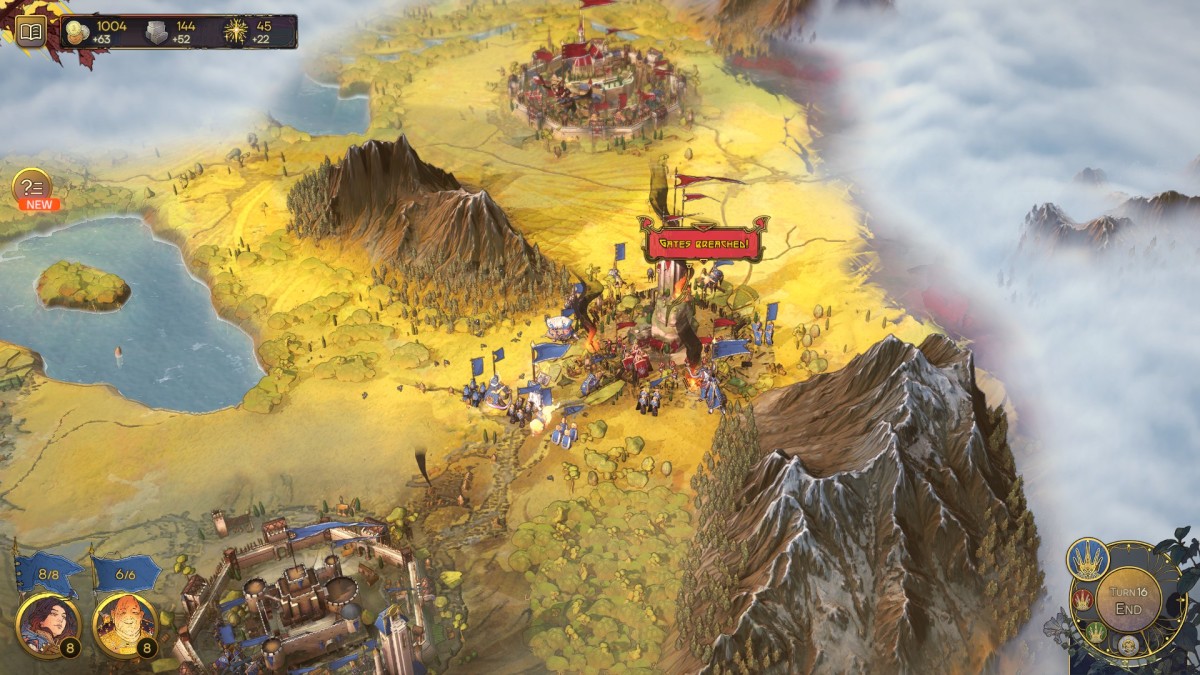
The one negative aspect of the demo – aside from not having the full game now, of course – is that the controls feel a little clunky at times. Movement on the map works in straight lines, making navigating around obstacles a bit awkward, and getting the information you want about units is a little too complicated as well – simple tooltips appearing on mouseover would do wonders here, I think.
Songs of Silence, I hereby declare in a ballad of loudness, is now on my wishlist.
You can play the demo during Steam Next Fest 2023 and wishlist the game, in case it appeals to you, on its official Steam page.
